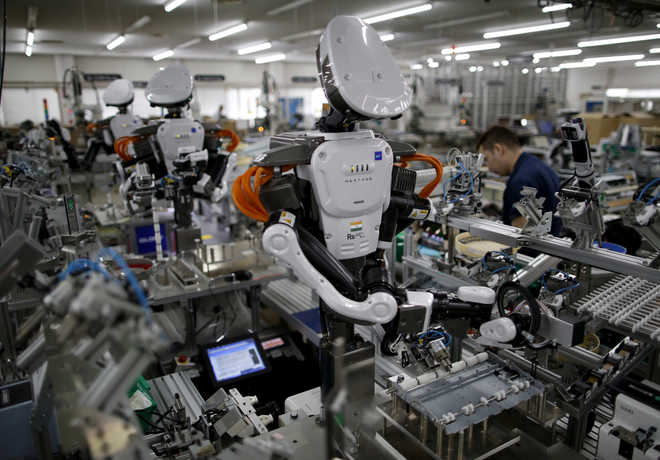
Photo for representational purpose only. Reuters
WASHINGTON: Scientists have developed an automated robotic system that can rapidly produce mini human organs required for medical research and drug testing.
The traditional way to grow cells for biomedical research is to culture them as flat, two-dimensional sheets, which are overly simplistic.
In recent years, researchers have been increasingly successful in growing stem cells into more complex, 3D structures called mini-organs or organoids.
These resemble rudimentary organs and in many ways behave similarly. While these properties make organoids ideal for biomedical research, they also pose a challenge for mass production.
The ability to mass produce organoids is the most exciting potential applications of the new robotic technology, according to the developers.
In a study published in the journal Cell Stem Cell, researchers from University of Washington in the US used a robotic system to automate the procedure for growing stem cells into organoids.
Although similar approaches have been successful with adult stem cells, this is the first report of successfully automating the manufacture of organoids from pluripotent stem cells. That cell type is versatile and capable of becoming any type of organ.
In this process, the liquid-handling robots introduced the stem cells into plates that contained as many as 384 miniature wells each, and then coaxed them to turn into kidney organoids over 21 days.
Each little microwell typically contained ten or more organoids, and each plate contained thousands of organoids. With a speed that would have impressed Henry Ford’s car assembly line, the robots could produce many plates in a fraction of the time.
“Ordinarily, just setting up an experiment of this magnitude would take a researcher all day, while the robot can do it in 20 minutes,” said Benjamin Freedman, an assistant professor at UW.
“On top of that, the robot doesn’t get tired and make mistakes. For repetitive, tedious tasks like this, robots do a better job than humans,” he said.
The researchers further trained robots to process and analyse the organoids they produced. They used an automated, cutting-edge technique called single cell RNA sequencing to identify all the different types of cells found in the organoids.
“We established that these organoids do resemble developing kidneys, but also that they contain non-kidney cells that had not previously been characterized in these cultures,” said Jennifer Harder, an assistant professor at the University of Michigan in the US.
“These findings give us a better idea of the nature of these organoids and provide a baseline from which we can make improvements,” Freedman said.
The researchers discovered a way to greatly expand the number of blood vessel cells in their organoids to make them more like real kidneys.
They also used their new technique to search for drugs that could affect disease. In one of these experiments, they produced organoids with mutations that cause polycystic kidney disease, a common, inherited condition that affects one in 600 people worldwide and often leads to kidney failure. PTI



























